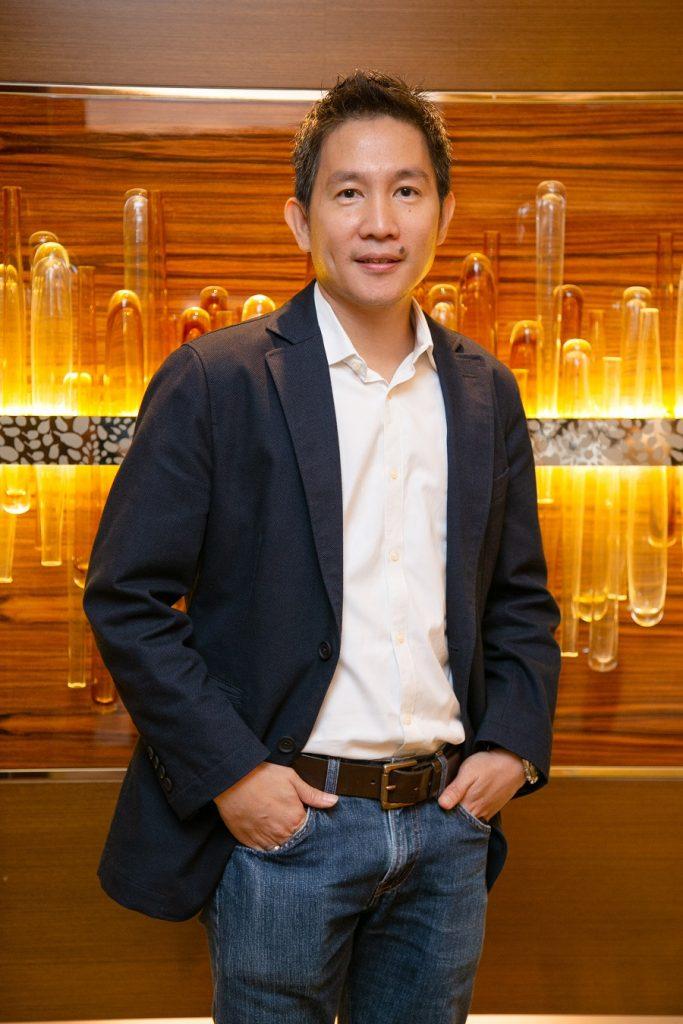Starting his career as a consultant, Global Marketing Head/Director Mayora Group Ricky Afrianto never imagined he would end up in the field of marketing, but he did, after he got an offer too good to be refused – a crucial position at one of the leading companies in Indonesia, PT Mayora Indah Tbk. He is now reckoned as a marketing expert who has helmed the expansion of Mayora’ business presence to more than 100 countries around the world. His marketing success comes not only in the form of market expansion of major Mayora brands, but the fact that several of those brands have become market leaders in various foreign countries outside the home turf.
Annisa Bella from Marketeers sat down with Ricky for a chat where he shared his view on the FMCG world today and the strategy of how a national company can seize the global market.
1.What is the meaning of marketing for Ricky Afrianto? And what made you interested in the world of marketing?
The way I see it, marketing is one of the biggest and longest battles in human history. The bad news and the good news; it is a never ending battle and a never ending journey. Honestly becoming a marketer wasn’t my dream in the beginning. When I was majoring in finance at the Kwik Kian Gie Business School, I dreamed of becoming a businessman, dressed dapper in branded shirts and polished shoes. However, my career eventually helped me gain a different perspective, I always found dabbling in something related to marketing, no matter what it was. Eventually, I developed an interest to learn about marketing as a discipline.
I started my career as a marketer in New Zealand Milk which is now known as Fonterra. Following a trainee management program, my career steadily grew and I could emerge as one of the key talent there. My curiosity to learn about other aspects of marketing led me to The Coca-Cola Company. In less than six months, I accepted a new offer, again from Fonterra, to serve as their Regional Category Manager for Asia and Middle East markets, to be based in Singapore. Two years later, I got introduced to the owner of Mayora from a head-hunter. What made me interested was that I had to take up a much stronger role in Mayora, and shoulder responsibility – as a Marketing Director to – manage more than 20 brands in product categories such as biscuits, wafers, chocolates, candy and instant food.
2. Market is always changing and so is marketing strategy. What differences do you feel in customers now compared with the past?
There always has been change. Till some time ago, we were struggling with millennials but now we are facing newer challenges of engaging the generation Z. What I see is, it has never been more difficult to understand consumers. Previously we knew, to reach consumers was indeed difficult, but there was one certain thing, we knew that the most effective medium for marketing was television. At present, television viewership is decreasing, especially if you are a business targeting young people.
On the other hand, I see there is no set formula to create the right digital marketing content for FMCG players. The question is, is there any FMCG advertisement on a digital channel that you can recall? The majority of you may need a long time to answer this question, or some of you wouldn’t be able to recall even one.
Yes, that’s bitter reality for FMCG players – nothing could replace television. Even though we see, from various research studies or experiences of several marketeers, that digital marketing is garnering good results, but what’s often forgotten is how rarely these case studies include an FMCG product. People will not remember a FMCG brand advertisement on digital, other than one on television. What’s weird is, people indeed are able to recall digital ads of technology products, e-commerce, and various other types of products which are not FMCG. This change of consumer behavior is certainly a new challenge for marketers.
3. The problem which is often faced by marketers is not having sensitivity to momentum or running out of creative ideas to practice marketing. What is your opinion about it?
As simple as, everything must have a point of differentiation. This may be easy to talk about, but it is difficult to implement. We need to be different, not just follow what’s in. Because if you don’t have a differentiation, you won’t give consumers any reason to buy your product. If you give the same offering, then why do they have to bother with changing or adopting your product
4. Do you believe the key for FMCG’s success depends on the ability of brands to carry out sustainable product innovation?
This is often misunderstood. Innovation is important. However, keep in mind that innovation is not only about changing products. Innovation can even take place in the way you communicate with your customers. I read a case study on Beng-Beng, a chocolate-combo snack which has now became Mayora’s winning product. To be able to maintain this product’s position as a market leader, Mayora needs to innovate. However, innovating the product is not easy. If Mayora chooses to innovate in terms of communication, such as how to enjoy Beng-Beng on room temperatures or chill it in fridge before consuming, it turns out it can be interesting to consumers. So, don’t get stuck with the idea that innovation can only be done through products, but it can also be done in the way of brand activation, even in advertisements.
5. Managing more than 35 Mayora brands competing in the global market is surely not easy. What kinds of barriers do you generally face in the global market and how do you overcome this challenge? Are there case studies of Mayora products that you can share with marketers?
Marketers cannot just bring the products and sales strategies from their home countries and apply it to a country where they want to expand. The challenge is not only in understanding the new consumer demographics, but also about their social and cultural values, and trends that exist in the country. A choice of incorrect strategy can lead to a great loss in investment.Learning from the experience of Kopiko, a Mayora coffee candy product that has succeeded in becoming a market leader in the Philippines, defeating multinational players. Indeed the success cannot be separated from the various adjustments we have made in introducing Kopiko in the Philippines market. One of them is related to taste.The majority of Indonesian consumers do not consume coffee with milk. But in the Philippines, they really like milk. So their taste profile is different from Indonesian consumers. If we launch a product similar to product in Indonesia, there might be a problem. What makes Kopiko a market leader in the Philippines is is our ability to rightly cater to the local tastes of consumers. The taste profiling that we do to consumers there is quite deep, and this has had a big impact on our business.
6. Which one is more appropriate for FMCG marketers these days; storytelling or story-making?
The latest trend shows that user-generated content is a new force in the marketing world. If previously marketing tended to be in the form of Storytelling (one-way) from marketers who created content for consumers, now we have moved towards Story-making in which the content created is not only from marketers, but also consumers who might be willing to make a review about our brands and spread it to a larger audience. For me, this is quite feasible now thanks to the presence of digital media. There may be content that marketers can make, it will definitely be a problem if it ends up looking ‘tacky’. If popular content about a brand or product comes from the consumer himself, it will be more powerful. Story-making cannot be entirely user-generated content, it has to be done in tandem with good PR-ing. Then, we can actually make a good story. For example, the positive endorsement that we received from President Joko Widodo in his speech which mentioned Mayora’s success in entering 100 countries. We made good PR-ing by making news about the endorsement. In my opinion, this is more than just storytelling. And, in my opinion, this is the highest form of endorsement, it’s hard to duplicate it.
7. If you say Story-making is more powerful now, does this mean using micro endorsers and macro influencers is no longer relevant to consumers in Indonesia?
I think it is still necessary, especially for Indonesian consumers who still believe in artists. In my opinion, the challenge ahead for the marketers, agencies, and influencers is, how to make an endorsement look smoother and seamless so that it does not look like an advertisement to public, because hard-selling is no longer as effective in targeting consumers.
8. For the last question, what kind of innovation or dream you want to pursue in the future?
I want to find a way how media other than TV can work for FMCG. That’s why we are working together with Facebook and Google. My big dream is making stories from Indonesia as successful examples for marketers in other countries, not only becoming a follower. I hope one day Mayora Marketing way can be as popular as Kellogg Marketing School.



